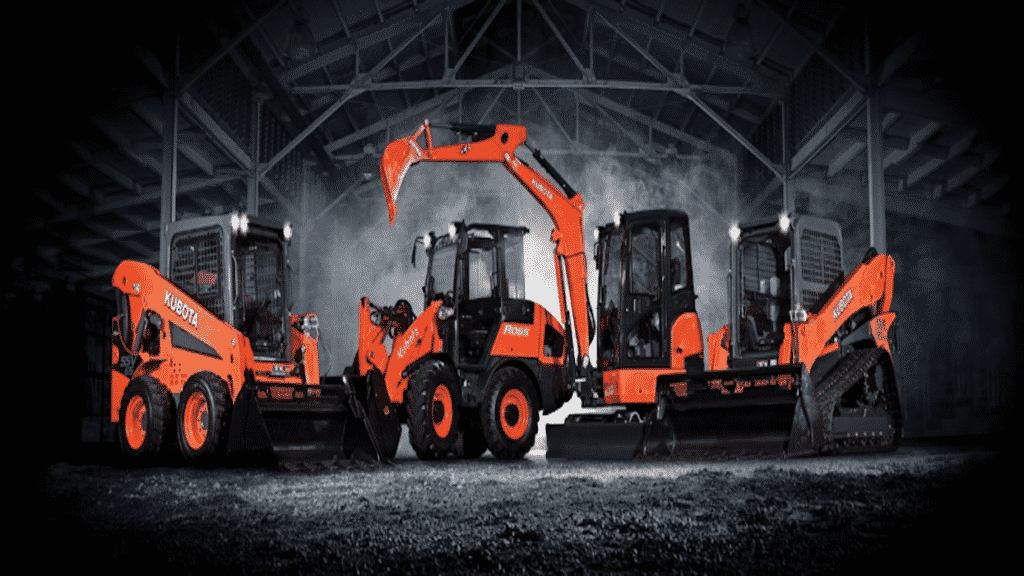Excavators are designed to do a number of jobs. You can use them for landscaping projects, digging trenches, lifting heavy objects, or even demolishing a building. They come in a range of sizes and models. And this is where it sometimes gets complicated.
You’ve decided on the Kubota range of excavators. But you’re now faced with a regular Kubota excavator vs mini excavator option. Which one should you pick and how do you know if it’ll do the job you need it for?
To make your life a little easier, this article will explore the options for you. We’ll look at what the different equipment can do and for which applications they’re best suited.
The Story Behind the Kubota Brand
Kubota first started in 1890 when Gonshiro Kubota, at the age of 19, decided to start a metal casting business in Japan. He was passionate about producing high-quality products for his customers and their communities.
With these values still guiding the company today, Kubota use innovative technology to manufacture construction equipment ranging from power shovels to loaders to excavators. Their reputation for producing premium quality and high performing equipment led to distribution centres opening worldwide.
The Kubota range is not only known for its reliability, durability and ability to operate in some of the most rugged and varied conditions. They’ve been designed to be environmentally friendly too. Without compromising on quality and performance, Kubota products are engineered to reduce emissions.
Kubota dealerships, whether it’s in Australia or Germany, have access to spare parts at all times. All their staff are well-equipped to offer efficient service support as a result of regular technical training. And you can expect excellent customer service at all times.
The Kubota Excavator Series
The Kubota range of excavators come in two series and are comprised of the conventional swing type excavator and the zero tail-swing excavator. Let’s take a closer look at the features of these types of excavators:
- Conventional swing: This type of excavator is perfect for digging, lifting and loading jobs. They can be found on any building or construction site. The KX series ranges from 0.8 to 8.2 tonnes. You have the option of choosing from a wide range of standard swing excavators. The ultra-compact excavator can be used in various applications while the mini excavator can do quality work in more confined spaces. You can go with an excavator with numerous expandable options or an excavator with high torque and extra strength performance. Advanced designs give you optimal working capabilities while keeping the excavator operator comfortable and safe at all times.
- Zero tail swing: The Kubota U Series ranges from 1.7 to 5.5 tonnes. These excavators have excellent 360⁰ manoeuvrability while being versatile, durable and high performing. The mini excavator in this series is powerful while giving you maximum control and performance. Your other options include excavators designed to operate safely in confined spaces while doing digging work in those hard to reach areas. If you’re looking for an excavator for tight, narrow spots you’ll find the right excavator for the job here.
The Kubota excavator series will give you a wide range of excavators to do a wide range of job applications. While you know you need an excavator, the burning question is whether you need a mini excavator or not.
The Right Excavator for the Right Job
When choosing between a Kubota excavator or a Kubota mini excavator, take a look at some of the benefits and characteristics of using each one.
The mini excavator:
- They’re more mobile than most standard excavators.
- They weigh under 10 tonnes with most ranging from 0 to 6 tonnes.
- They’re designed to do small jobs and to operate in tight, confined spaces. Ideal for urban areas.
- Have the ability to manoeuvre around buildings or areas with lots of lines or pipes running through the ground.
- Not as powerful as standard excavators.
- Create minimal damage to areas such as roads, pedestrian walkways and yards.
- The Kubota mini excavator has improved pump capacity and an extended dozer arm to carry out jobs efficiently and quickly.
The standard excavator:
- Has more versatility.
- Range between 10 and 45 tonnes.
- Can fit into most large spaces for most job applications.
- They’re powerful and are most commonly used on construction sites.
- Can carry out various applications from tough excavating jobs to demolition projects.
- Roomy and comfortable work cabins for the operator.
Ask the following questions when deciding between a Kubota excavator or a Kubota mini excavator:
- What job do I need done?
- Does the job entail work in tight, confined spaces in an urban setting or heavier, construction work in larger spaces?
- Is the hydraulic system of the excavator powerful enough for the job I need done?
- What kind of manoeuvrability and visibility do I need in order to get the job done?
- Do I need a lightweight option or an excavator that’s heavier, for tougher jobs?
Final Thoughts
You can’t go wrong with picking a Kubota excavator for your construction or landscaping job. When you know what the job entails, you’ll be able to choose between a standard or mini excavator. Both have been designed to carry out specific applications, so make sure you pick the right excavator for the right job.
